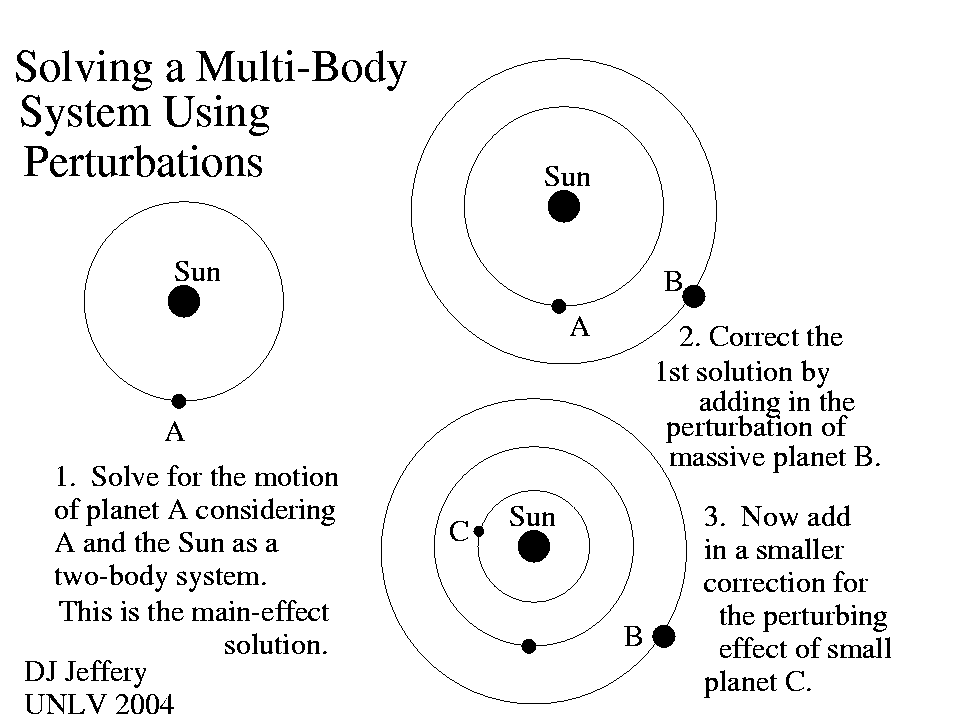
Caption: A diagram illustrating the solution of an astrophysical self-gravitating multi-body system (AKA n-body system) by perturbation theory.
The procedure of perturbation theory for multi-body systems is as follows:
-
You first solve exactly a simplified
multi-body system
that approximates the real
multi-body system.
This gives an approximate solution to the real multi-body system.
Usually, the simplication is to treat each astro-body as part of a (gravitational) two-body system (for which an exact solution exists).
- Then you correct your calculation by adding on in order of decreasing importance
the previously excluded effects of the
real multi-body system
as
astronomical perturbations
to the exact solution for the simplified
multi-body system.
The astronomical perturbations make the simplified multi-body system more like the real multi-body system and improve the approximate solution.
- There is usually NO end to the series of
astronomical perturbations
of decreasing importance.
Note, perturbation theory will always be NOT exactly correct because of round-off error in floating-point arithmetic and truncation error (in a series expansion): perturbation theory is a series expansion solution. You just stop adding astronomical perturbations to the series expansion solution and when your solution is adequate: i.e., is sufficiently accurate/precise for yours needs. Often you stop adding astronomical perturbations when your approximate solution agrees with observations to within observational error.
- For astrophysical systems,
the astronomical perturbations
are usually overwhelmlingly
gravitational perturbations.
Image link: Itself.
Local file: local link: orbit_perturbation.html.
File: Orbit file: orbit_perturbation.html.